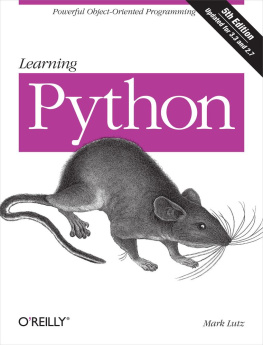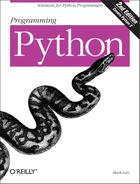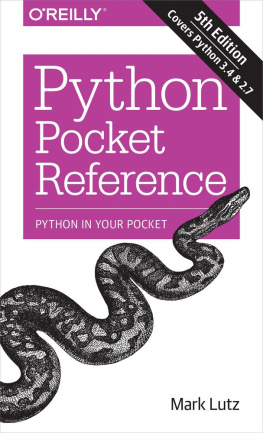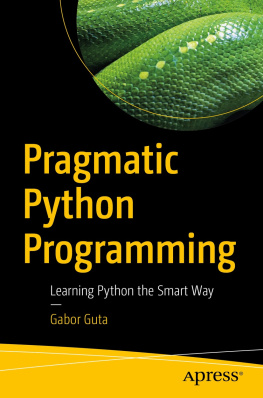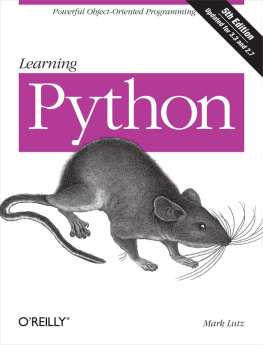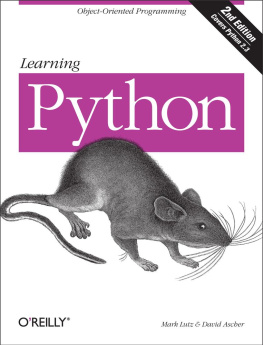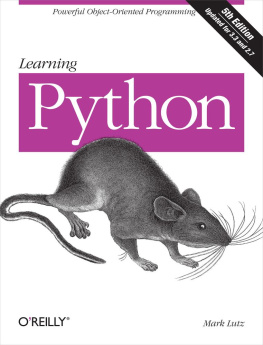Mark Lutz - Learning Python
Here you can read online Mark Lutz - Learning Python full text of the book (entire story) in english for free. Download pdf and epub, get meaning, cover and reviews about this ebook. year: 2007, publisher: OReilly Media, Inc., genre: Home and family. Description of the work, (preface) as well as reviews are available. Best literature library LitArk.com created for fans of good reading and offers a wide selection of genres:
Romance novel
Science fiction
Adventure
Detective
Science
History
Home and family
Prose
Art
Politics
Computer
Non-fiction
Religion
Business
Children
Humor
Choose a favorite category and find really read worthwhile books. Enjoy immersion in the world of imagination, feel the emotions of the characters or learn something new for yourself, make an fascinating discovery.

- Book:Learning Python
- Author:
- Publisher:OReilly Media, Inc.
- Genre:
- Year:2007
- Rating:3 / 5
- Favourites:Add to favourites
- Your mark:
Learning Python: summary, description and annotation
We offer to read an annotation, description, summary or preface (depends on what the author of the book "Learning Python" wrote himself). If you haven't found the necessary information about the book — write in the comments, we will try to find it.
Abstract: Portable, powerful, and a breeze to use, Python is ideal for both standalone programs and scripting applications. With this hands-on book, you can master the fundamentals of the core Python language quickly and efficiently, whether youre new to programming or just new to Python. Once you finish, you will know enough about the language to use it in any application domain you choose. Learning Python is based on material from author Mark Lutzs popular training courses, which hes taught over the past decade. Each chapter is a self-contained lesson that helps you thoroughly understand a key component of Python before you continue. Along with plenty of annotated examples, illustrations, and chapter summaries, every chapter also contains Brain Builder , a unique section with practical exercises and review quizzes that let you practice new skills and test your understanding as you go. This book covers: Types and Operations -- Pythons major built-in object types in depth: numbers, lists, dictionaries, and more Statements and Syntax -- the code you type to create and process objects in Python, along with Pythons general syntax model Functions -- Pythons basic procedural tool for structuring and reusing code Modules -- packages of statements, functions, and other tools organized into larger components Classes and OOP -- Pythons optional object-oriented programming tool for structuring code for customization and reuse Exceptions and Tools -- exception handling model and statements, plus a look at development tools for writing larger programs Learning Python gives you a deep and complete understanding of the language that will help you comprehend any application-level examples of Python that you later encounter. If youre ready to discover what Google and YouTube see in Python, this book is the best way to get started
Mark Lutz: author's other books
Who wrote Learning Python? Find out the surname, the name of the author of the book and a list of all author's works by series.

